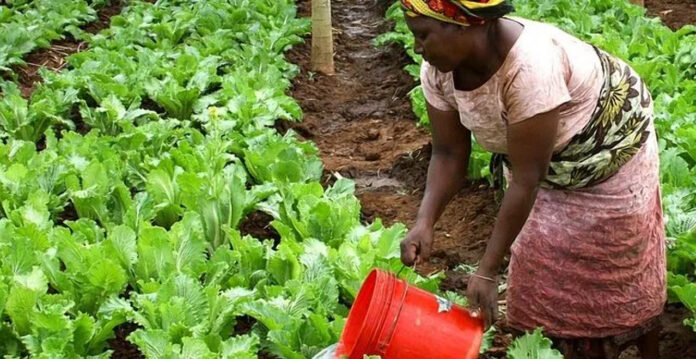After the cultivation season, the soil normally loses various nutrients, prompting many farmers to use chemical fertilizers. However, as a farmer, do you have to add chemical fertilizers every time you plant or top dress your crops? Do you ever worry about the high cost of the input? Instead of using harmful chemicals to enhance the soil, there are several organic farming methods that will help you increase the health of the soil and keep nature unharmed.
For a start, according to the Soil Association, organic is a system of farming and food production. With organic farming, “organic farmers aim to produce high-quality food, using methods that benefit our whole food system, from people to planet, plant health to animal welfare.”
Let us look at the five organic farming methods you can use to boost your organic farming:
i) Animal manure: Obtained from cows, horse, sheep, goats, pigs and poultry, this is a top source of organic matter that helps improve the soil. The use of animal manure is highly recommended as it normally boosts production of crops and also soil fertility.
ii) Green manure: This comes from plant materials, which are allowed to decay and release nutrients for the next crop. The most important are plants that with the help of bacteria capture nitrogen from the atmosphere and release it into the soil.
The plants provide soil bacteria around the roots in the form of sugars. In return, the bacteria provides nitrogen in a form the plants can use.
This nitrogen can be used by other plants as the original nitrogen-fixing plant decays. Crops like alfalfa, clover and soybeans, among other legumes, are good at this. Fresh, dried or decomposed plant materials can be used as fertilizer.
A classic example is the use of tithonia as a source of plant nutrients, supply of organic matter and in amending soil acidity. Research has shown tithonia has nitrogen (3.5 per cent), phosphorus (0.37 per cent) and potassium (4.1 per cent) on dry matter basis.
iii) Compost: Compost is the end product of biological breakdown of organic matter. During composting, carbon from the organic matter is lost as carbon-dioxide and heat and water are generated.
The resulting material has more concentrated nutrients and can be used as fertilizer as well as a source of organic matter for soil micro-organisms. The product increases the solubility of nutrients in the soil thus uptake by plants, and avoids the immobilization of nitrogen that can occur with straw or sawdust bedding.
iv) Biofertilizers: Micro-organisms normally convert the unavailable form of nitrogen, phosphorus and potash present in plant root nodules and atmosphere into available form. They also enrich the crops with vitamins, amino acids and growth promoters.
In the fields where inorganic fertilizers are applied, the number of micro-organisms is reduced because the chemicals are harmful for their survivals.
How to start a poultry farming business today and the returns to expect
Examples of biofertilizers are azospirillum, phospho-bacterium and rhizobium. Biofertilizers are classified in two categories.
First are those that fix atmospheric nitrogen and second those that convert insoluble forms of phosphorous into soluble forms thereby making it available to plant roots. For easy use, biofertilizers are normally applied to the soil after being mixed with farmyard manure or seeds are treated with the fertilizer before being planted.
v) Vermi-composting: This is a method of making compost manure with the use of earthworms that live in the soil, eat the biomass and excreta the digested form. The upward and downward movement of earthworms improves the aeration of soil and facilitates easy draining of water during the rainy season.
Tunnels made by the earthworms are helpful in holding the water, thus, increasing the groundwater level.
Generally, nutrients in lower portion of the soil are not available to the crops. Some earthworms, thus, help in bringing them to the upper part.
Therefore, when vermi-compost is applied to the soil, there is an increase in earthworm population and it maintains bacterial population since nitrogen-fixing bacteria is present in large numbers in vermin-waste.








